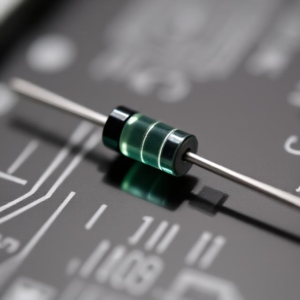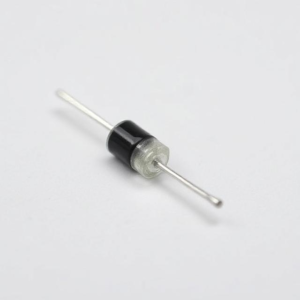A diode is a semiconductor device that allows current to flow in only one direction .There are several types of diodes, each designed for a specific purpose. Diodes are the building blocks for many modern electronic devices.
The most common types of diodes used are

Standard (Rectifier) Diode:
A rectifier diode is the most basic type of diode. It is primarily used to convert Alternating Current (AC) into Direct Current (DC). Rectifier diodes are used in power supplies to convert AC from wall outlets into DC for electronic devices like radios, TVs, and computers.
Zener Diode:
A Zener diode is used to regulate voltage. It allows current to flow normally in one direction, but in the reverse direction, it will start conducting when the voltage exceeds a specific value, called the Zener breakdown voltage. The Zener diode is designed to clamp the voltage at a set level, keeping it from rising beyond that point. This is useful for protecting sensitive components from voltage spikes. In reverse bias (when the voltage is applied in the opposite direction), the Zener diode will break down and allow current to flow, but only after the voltage reaches the Zener voltage.
Uses:
Voltage regulation: Zener diodes are used in voltage regulation circuits to maintain a steady output voltage.
Surge protection: They protect devices from voltage surges by clamping the voltage to a safe level.
Light Emitting Diode (LED):
An LED is a diode that emits light when current flows through it. It’s a special type of diode that uses the energy from the current to produce light.
How It Works: When current flows through the LED, the electrons in the semiconductor material release energy in the form of light. The color of the light depends on the material used and the energy gap of the semiconductor.
Uses: Display screens: LEDs are used in TVs, monitors, and digital clocks.
Indicators: Used in electronics as indicator lights to show whether a device is on or off.
Schottky Diode:
A Schottky diode is a special type of diode known for its low voltage drop and fast switching speed.
The Schottky diode has a different construction than regular diodes. It is made by combining a metal with a semiconductor material (typically n-type silicon).
Uses: Power rectification: Used in power supplies where efficiency is critical, such as in computers and high-speed circuits.
Photodiode :
A photodiode is a diode that generates current when exposed to light. It works by converting light into electrical energy. When light hits the semiconductor material inside the photodiode, it excites electrons and creates a small current (called the photoelectric effect).Photodiodes can be used in reverse bias mode to detect light levels.
Uses:
Optical sensors: Used in devices like CD players, smoke detectors, and cameras.
Solar cells: Photodiodes are the building blocks of solar panels, which convert sunlight into electricity.
Varactor Diode :
A Varactor diode is a diode that acts like a variable capacitor. Its capacitance changes when a reverse voltage is applied.
How It Works:
When you apply a reverse voltage to the varactor diode, the size of the depletion region (the region where current doesn’t flow) changes, which in turn changes the capacitance of the diode. The higher the voltage, the smaller the depletion region, and the lower the capacitance.
Tunnel Diode :
A tunnel diode is a diode that has a very high level of conductance due to a quantum effect called tunneling.
How It Works:
Tunnel diodes have a very thin depletion region, which allows for quantum tunneling. This means that electrons can pass through the barrier even when they don’t have enough energy (which would normally block current).
Uses:
High-speed switching circuits: Tunnel diodes are used in fast oscillators and microwave circuits. Amplifiers: Used in very fast amplifiers, such as those found in communications technology.
Avalanche Diode:
An avalanche diode is a diode that is designed to operate in the avalanche breakdown region where it can handle high voltages and prevent damage by safely dissipating excess energy. The avalanche diode is built to handle reverse bias voltages that are high enough to cause avalanche breakdown, allowing current to flow safely without damaging the diode.
Uses:
Overvoltage protection: Protecting circuits from voltage spikes, such as in surge protectors.
High-voltage applications: Used in circuits that need to handle very high reverse voltages safely.











